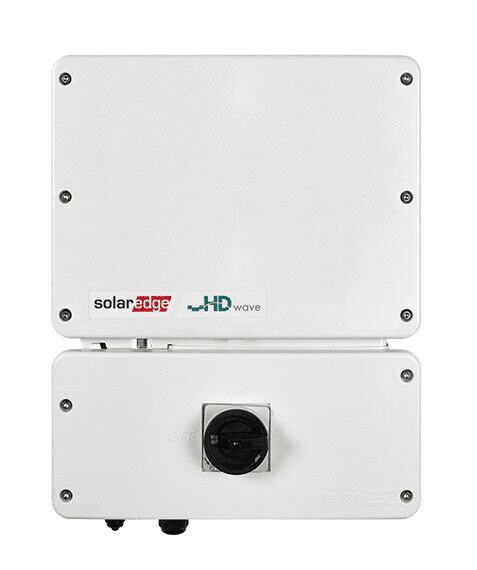It’s what’s underneath the panel that counts.
Solar panels may be what you can see on the roof, but it’s the inverter that does the hard work. The solar panels on your roof absorb sunshine in the form of direct current (DC) power. The inverter then converts that DC power to alternating current (AC), this is the form of electricity you can use in your home or business.
We always recommend using a SolarEdge inverter with SolarEdge Power Optimizers to maximise the systems performance especially if it is affected by shading from neighbouring objects or when the system requires panels to be installed facing multiple directions or different angles. The independence of each Power Optimiser allows us to be much more flexible in the design and will mean each panel is always performing to its maximum capacity.
In a traditional string inverter system the panels are wired in series and then to a single inverter. This means that each panel can only perform as well as the lowest performing panel. Over the life of the system, the degradation of each panel will differ and cause variations in output which over time, will result in far less energy being produced then a SolarEdge Power Optimiser system.
All of our SolarEdge systems are 100% battery ready hybrid inverters and come with a full 25 year replacement warranty on Inverters and Power Optimizers.
We always recommend using SolarEdge inverters for all installation setups, especially if there's shading. This can include being covered by leaves or overhanging TV antennas, which surprisingly make great places for birds to hang out and make a mess below.
This simple design utilises one or two different roof directions and angles. The SolarEdge inverter is a good choice when considering the payback period of your system, as one of the most trusted brands in the solar industry with almost 17 years of manufacturing under their belt.
